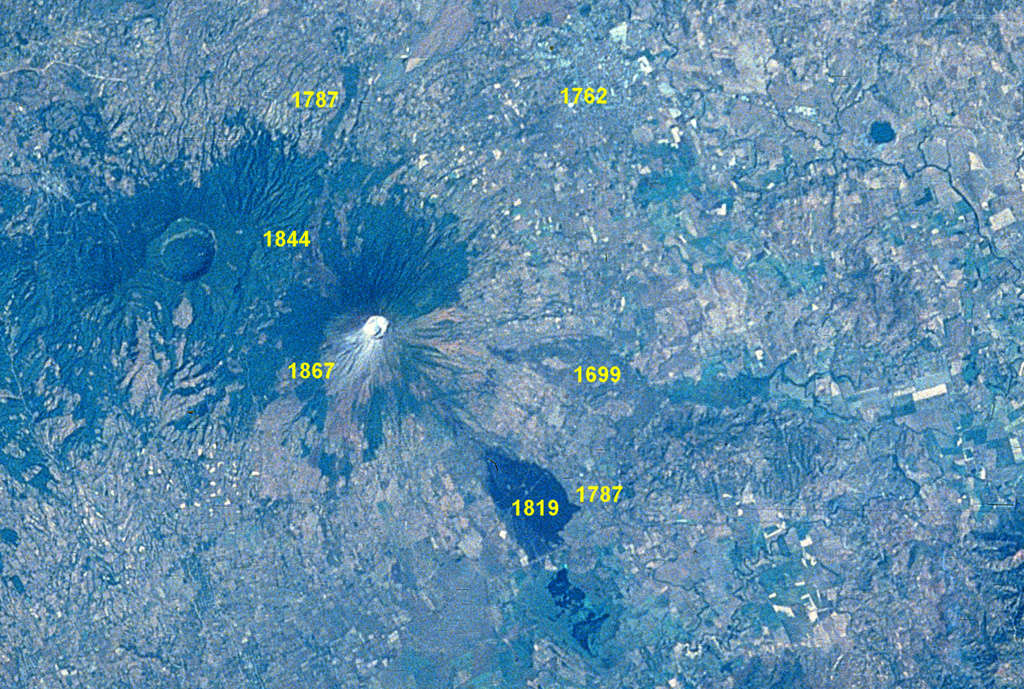Global Volcanism Program | Image GVP-10774

An eruption at San Miguel on September 21-23, 1787 from summit and N- and SE-flank vents produced five lava flows. Ashfall caused extensive crop damage. Other historical lava flows from San Miguel are labeled in this Space Shuttle image with north to the upper left. The 1762 lava flow (faintly seen at the upper right) extended as far as the present-day city of San Miguel. The 2.5-km-wide caldera of Chinameca volcano lies NW of San Miguel volcano, and the small dark-colored dot at the upper right is Laguna de Aramuaca maar.
NASA Space Shuttle image STS61C-31-47, 1986 (http://eol.jsc.nasa.gov/).
![]() This image is made available as a Public Domain Work, but proper attribution is appreciated.
This image is made available as a Public Domain Work, but proper attribution is appreciated.

San Miguel
